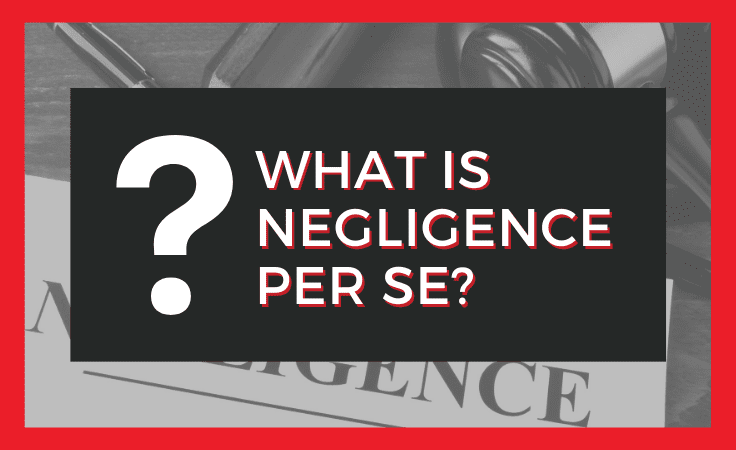If you are filing a personal injury lawsuit in California, you will need to prove the defendant’s negligence. You will need to show that the at-fault party’s conduct breached his or her duty of care to you. You will also need to prove that the defendant’s actions were the actual and proximate cause of the injuries you suffered. In some cases, however, the concept of negligence per se will come into play.
How to Establish Negligence in California Personal Injury Claims
To secure compensation in a California personal injury lawsuit, simply sustaining an injury is not enough. You will need to provide clear evidence to support four key elements.
● The defendant owed you a duty of care at the time of the accident.
● The defendant breached his or her duty of care. You must prove that a reasonable person would not have committed the negligent act under the same circumstances.
● The breach of duty directly caused your injuries.
● You suffered damages in the accident that you can claim in your lawsuit.
Proving negligence can be complex. You will need to provide evidence that documents the defendant’s actions or failure to act, as well as evidence establishing the extent and nature of your injuries. One of the most challenging aspects, however, is establishing whether or not the defendant’s actions were reasonable. Depending on the facts of your case, you may have to ask expert witnesses to provide testimony on the defendant’s conduct.
The Negligence Per Se Doctrine
Many negligent acts can rise to the level of negligence, such as failure to repair a set of broken stairs or ignoring hours of service regulations while operating a commercial truck. If a negligent act violates a state law, the concept of negligence per se will apply to the case.
Negligence per se is a legal doctrine that presumes that a defendant acted in negligence if he or she injures another person while violating a statute. To prove negligence per se in your case, you will need to prove the following four elements.
● The defendant violated a statute.
● The violation of the statute caused your injuries.
● The state designed the law to prevent the injury you sustained.
● You are a member of the class that the law seeks to protect.
As soon as a defendant violates state law, the court considers the defendant’s actions to be unreasonable. For example, say that you are in a car accident when another vehicle drifts into your lane and collides with your passenger side door. Subsequent police reports determine that the defendant was under the influence of alcohol at the time of your crash. Since California has a specific statute banning drinking and driving, the defendant violated state law during the crash.
During your personal injury trial, you can use the negligence per se theory to establish the defendant’s liability. Since drivers have a statutory duty not to drink and drive, the at-fault party breached his duty of care. You do not need to prove that the defendant’s actions were unreasonable since the violation establishes this fact.
Although you may be able to use negligence per se in your personal injury claim, the defendant can use several strategies to defend him or herself from these accusations. A California personal injury lawyer can strengthen your claim and counter the defendant’s arguments, helping secure the compensation you need to recover.
Contact your Bakersfield personal injury lawyer as soon as possible to discuss your legal options.
